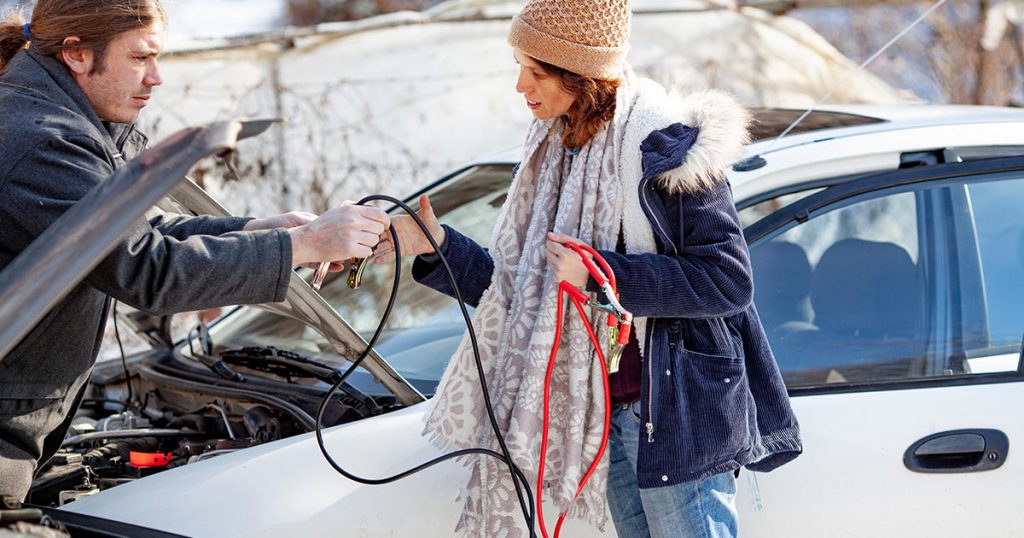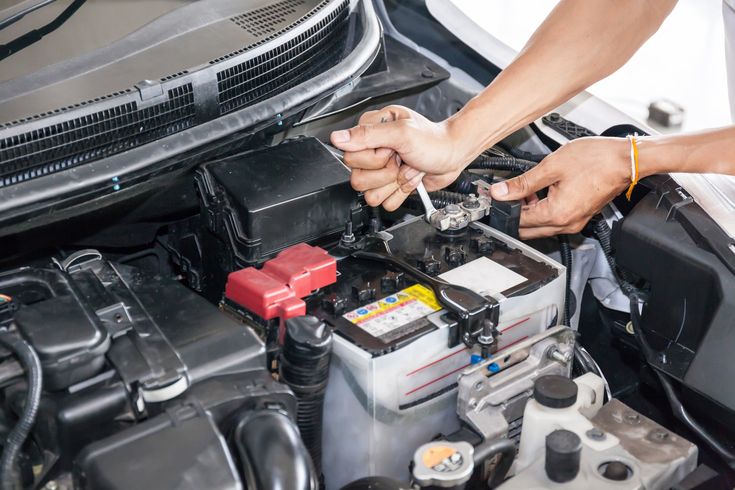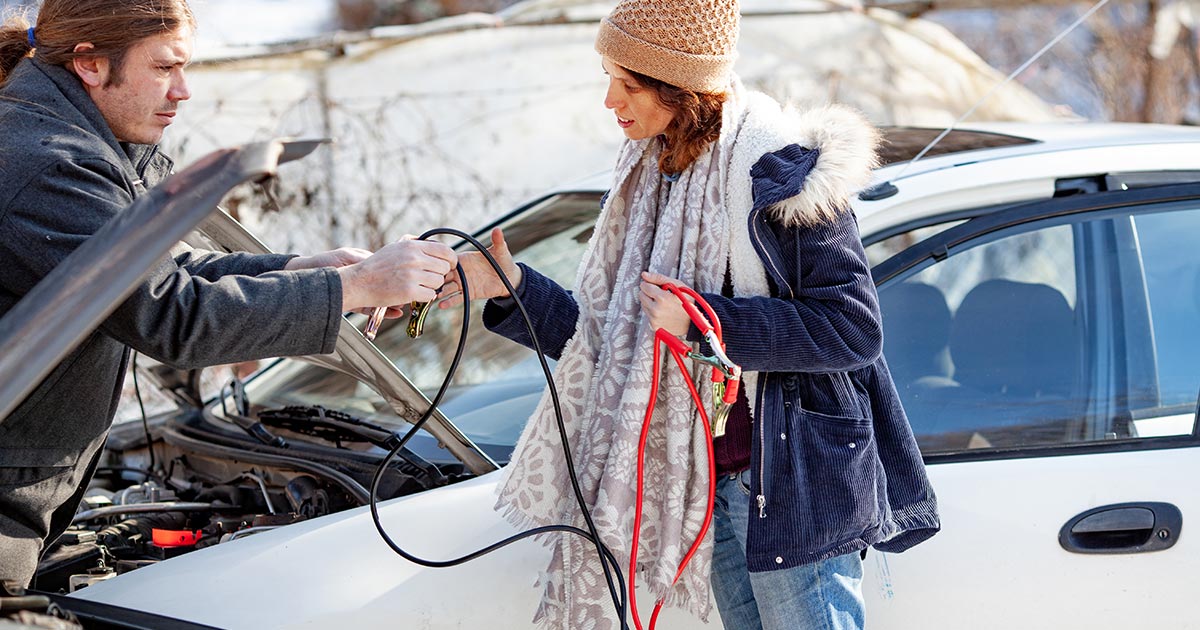Without a healthy battery, your car is not going anywhere. Just like your complex body, your vehicle is a sophisticated universe of parts and mechanisms, and there are many reasons why your battery might be drained.
While those jumper cables might be a quick fix, a dead or unhealthy car battery is annoying and spells troublesome and expensive repair or replacement. But it can also be avoided, with proper maintenance, and given that you know why your car battery keeps dying.
Contents
What Happens If You Have A Weak Battery?
The battery is a critical component. To maximize its lifespan and functionality and to ensure a hassle-free driving experience, you need to make sure your car battery is properly charged. When you have a weak battery, the charging system (that is the alternator) and the starter motor will draw excessive voltage to compensate for the lack of battery power, thus they will be overworked and over time can malfunction.
Therefore, you need to inspect and test your batteries when there’s the first sign of trouble and get them charged or replaced in time. Otherwise, you could wind up replacing expensive electrical parts–typically without warning.
Top Reasons Why Your Car Battery Keeps Dying
1. Loose or corroded battery terminals
Your car battery can only work properly when the connections at the terminals are intact. All terminals must be free of contaminants and fit tightly so that you cannot wiggle them by hand (you have to be careful with side-post terminals, as you can strip the threads and actually break into the case, causing electrolytes to leak out).
Over time, battery cables and terminals are prone to corrosion. In addition, the terminal fitting can become loose. These will impede the alternator’s ability to charge the battery and provide power to the car, thus you might have trouble starting the vehicle. You might even stall out while driving or damage the vehicle’s electronic components.
But worry not. Corrosion is an inevitable problem with all types of batteries. Corroded and loose-fitting terminals are not a serious issue and can be avoided with regular maintenance. Clean your car’s battery terminals with a commercial solution and a soft-bristled brush (remember to wear protective gloves and goggles), and a simple yet effective tip to protect against corrosion is to add a little Vaseline on the terminals. Another easy solution is to apply liquid electrical tape to create an airtight seal, but before removing the battery cable, you’ll need to cut it off.
2. Your battery is just old and needs to retire

Nothing lasts forever, including your car’s battery. Depending on how you drive and the climate of where you live, car batteries typically can last between three years to five years. Once your battery hits the three-year mark, it is time to monitor it closely.
There are a number of factors that can negatively influence the lifespan of your battery, including extreme temperatures and frequent short trips. If your car battery dies quickly, even after a jumpstart, it is a sign that your batteries are old enough and need to be replaced.
To keep track of your battery’s health and know when it’s time for a new one, you will need a multimeter or a voltmeter, both of which measure the voltage stored in the battery at a certain time. Power to run the car is stored in the battery and is measured in voltage, and the level of voltage in a battery is essentially its state of health.
A battery is fully charged when it holds 12.6 volts or above. When a battery goes down to 12.2 it is only 50% charged, and when it is below 12 volts the battery is “dead” and needs to be replaced.
To use a multimeter to test a battery:
- Before you use a multimeter to test a car battery, it is important to let the car sit for at least one hour, or overnight. This is because the alternator produces electricity and charges the battery, and if the car has been running, the charge from the powered alternator will produce a higher misleading number on the multimeter.
- Locate the battery, which is often housed in the engine compartment under the hood, to one side of the engine. Set your multimeter to 20 DC voltage by turning the knob to 20 on the “DCV” (Direct Current Voltage) range, which will let you accurately measure a battery that stores between 0 and 20 volts (you need to set the multimeter to a specific range each time you use it to test something). The multimeter should read 0.00.
- Connect the multimeter’s red (positive, marked “+”) meter probe with the red (positive) battery terminal, and the black (negative, marked “-”) meter probe with the black (negative) battery terminal.
Tip – Knowing your battery’s age: Just like how your car’s tire still deteriorates with age even when it’s stored away safely, your batteries also lose their strength with old age even without a lot of use and proper care. Therefore, when shopping for batteries, you should always buy a new one that was manufactured within the last 6 months.
To know how old your battery is, you can check the four- or five-digit date code on the cover of your battery case. What you need is just the first part of the code, which consists of a letter and a digit, for instance, A20.
The letter is assigned to each month: A for January, B for February, and so on. The number that follows denotes the year: for instance, 9 for 2009, 12 for 2012, 20 for 2020, and so on. So “A20” means the battery was shipped from the factory to local battery wholesale distributors in January 2020.
3. The alternator isn’t charging the battery properly

Your car relies on your battery to get the engine started and running. But when your vehicle is running, your battery relies on the alternator to help it stay charged. The alternator produces electrical energy from the car’s mechanical energy and uses this electricity to charge the battery as well as power various electrical accessories such as lights, radio, and air conditioner.
If the alternator is doing its job properly, that is if it provides optional charging to the battery, the lifespan of the battery will be maximized. But both overcharging and undercharging will shorten the battery’s life. In addition, if your alternator isn’t working properly, it’s not charging your battery efficiently, so you might have trouble starting your car.
If the battery is in good shape, and if the slow-starting issue happens when the car has been running, that is when the engine is hot, the alternator might be the culprit.
Like your battery, you must also test your alternator regularly or whenever you encounter a hard-start or no-start problem. They must go hand in hand.
Do note that you must always test the battery first before you can test the alternator. This is because the battery fires the engine, and once the engine runs, it spins the alternator and this spinning keeps the battery charged. If the battery is too weak, it will not get the car running and thus the alternator cannot be tested. You need to perform two tests on the alternator to check whether it’s working properly at idle speed with no drain from electrical accessories as well as at higher speed under heavy usage.
- To test an alternator’s no-load voltage: leave the engine idle, and turn off all electrical accessories that may be using electricity, including lights, the dashboard, and the stereo. Repeat the battery test above using the multimeter. A healthy alternator should produce a reading between 13.1V and 14.6V when the engine’s running at regular idle speed. Anything outside this range means your alternator is either undercharging or overcharging your battery, both of which will shorten the battery’s lifespan.
- To test the alternator’s load voltage to see if it will function properly under heavy usage: Let your assistant keep the engine running at a speed of 2,000 RPM. Turn on all electrical accessories and reconnect the multimeter. A healthy and strong alternator should read 13.0 volts and above. Anything lower than 13.0 volts signals a weak alternator that should be checked by a professional.
Read more:
- How To Test A Car Battery With A Multimeter
- How To Test An Alternator: The Complete Guide
- How To Remove A Car Battery Safely
4. A parasitic draw on the battery
While your engine runs, the alternator is powered and recharges the battery. However, when your car is off, the alternator can’t recharge the battery, while your battery still powers various accessories, including the interior lights, the clock, and the radio.
Most of these typically don’t drain your car battery, but little electrical mishaps can still happen and drain your battery. Interior lights (including door lights) and bad fuses might be potential sources of extra stress. To avoid such mishaps, often referred to as a parasitic draw on the battery, you should make it a habit to turn off all lights and make sure all doors are fully closed and latched before leaving the car, including your trunk and glove box.
5. Extreme weather conditions
Your vehicle’s battery is also sensitive to extreme temperatures, which is why drivers experience hard starting problems more often on freezing winter mornings and very hot summer days. “Young” batteries with fewer years on their back can better withstand intense cold or heat, but older batteries are weaker with age and thus have lower resistance to extreme temperatures, and can even die completely.
According to AAA’s Automotive Research Center, a car’s battery is weakened by about 60% at 0°F, and at 32°F it loses 35% of its strength. Extreme temperatures can cause irreversible damage to your battery and what follows would be expensive replacement.
First off, extreme heat can evaporate your battery’s vital liquids, thus weakening its charge. It can also speed up the corrosion process, which will damage the internal structure of the battery and shorten its lifespan.
Meanwhile, severe cold weather can freeze a battery. This will make the sides of the housing bulge, short out the plates and the battery will no longer charge. Lead acid batteries and Lithium Ion batteries are particularly weak to extreme cold weather.
A battery has adequate resistance to cold temperatures at 100% charged, but as it wears down, that strength will weaken. At 50% charged, your battery could freeze overnight at -10 F. During the winter months, starting an engine will take up more current than what’s needed in normal weather, up to twice as much. This is why you are more likely to have a hard starting problem on freezing winter mornings.
Because the temperature has a significant impact on your car battery, you should choose a battery appropriate for your local weather conditions. It’s best to consult your owner’s manual as well as a certified mechanic. Batteries specifically made to withstand extreme heat are often labeled “S” or “South” while cold-weather batteries are often labeled “N” or “North”. In some cases, if you live in hot climates, you can replace your AGM battery with a traditional flooded type to maximize its lifespan.
5. Frequent short trips with an old battery
You might have known that more highway driving at constantly high speed is better for your car in general, while a lot of driving in stop-and-go traffic would prematurely wear out many car parts. This is also true with your car batteries.
What happens when you frequently go on short trips is while cranking the engine takes a tremendous amount of power from your battery, the alternator might not have enough time to properly recharge your battery between drives. Over time, this significantly weakens the battery and shortens its lifespan, especially if your battery is already old.
Watch this video to learn how to fix this problem:
Tips: How To Ensure Your Battery’s Healthy
Choose the right type of battery for your vehicle
First, to ensure optimal performance and lifespan, you must get the correct battery for your car. Each vehicle needs a different amount of power and a differently sized battery, so every vehicle requires a specific type of battery. Thus, you need to consult your owner’s manual to know what kind of battery is suitable for your car or ask a mechanic what’s best for your car.
For instance, if you take your vehicle on off-road trips often, you need a battery that can endure constant vibrations on rough terrains. Many cars come with AGMs to support an increasing array of electrical components, and the charging system may be configured specifically for an AGM battery. In some cases, you can replace your AGM battery with a traditional flooded battery to boost longevity in hot climates (although the flooded type will require more maintenance as below).
Pick a battery with easier maintenance
Car batteries require regular maintenance to stay healthy. A way to save time and better ensure that your battery is healthy despite not being a handyman is buying a maintenance-free battery in the first place. If allowed, get a gel type or an AGM battery. Thanks to advanced technology, these are leak-free and don’t need any special attention like flooded lead-acid batteries.
Flooded lead-acid batteries require more maintenance. They lose water during the charge cycle, thus they are required to be filled with distilled water only every 2-4 weeks as needed to function properly and stay healthy. Furthermore, they should be equalized occasionally to make sure each cell is equally charged. You can do this by applying a controlled overcharge once every 30-90 days.
Perform load tests regularly
While almost all of today’s car batteries are said to be maintenance-free, regular inspection and maintenance are still crucial for any machine. It’s recommended that you test your battery together with your alternator (both no-load and load tests), preferably at least once a year once it is 3 years old in a mild or cold climate, or once it’s 2 years old if you live in a hot climate. Doing so tests the battery’s ability to hold voltage while being used, and the results will let you know when it’s time for a replacement.
Useful accessory: Float/trickle charger
All types of batteries are prone to a problem called natural discharge or self-discharge. This is an inevitable process, in which internal chemical reactions reduce the stored charge of the battery without any connection between the electrodes or any external circuit. Therefore, if you need to put your vehicle into storage during the winter or other circumstances where it will be idle for a long period, you should invest in a float charger to maintain your battery’s full charge.
Also known as trickle chargers, storage chargers, or maintenance chargers, these float chargers prevent excessive self-discharge when your battery isn’t used for an extended time. To prevent this, the charge rate of a float charge is equal to the battery’s natural self-discharge rate.
Most trickle chargers have built-in circuitry to prevent overcharging so you can leave the charger on 24/7 without worrying about overcharging the battery, although some models do not and can damage a battery by overcharging it. Even though a float charger automatically monitors and charges the battery, it is always recommended that you periodically take a look to make sure that everything is still in good working order.
While you’re at it, it’s best to get a portable battery jump starter too, and store it in your vehicle at all times as an emergency tool. These increasingly compact accessories allow you to conveniently jump-start your vehicle without having to rely on another car.



